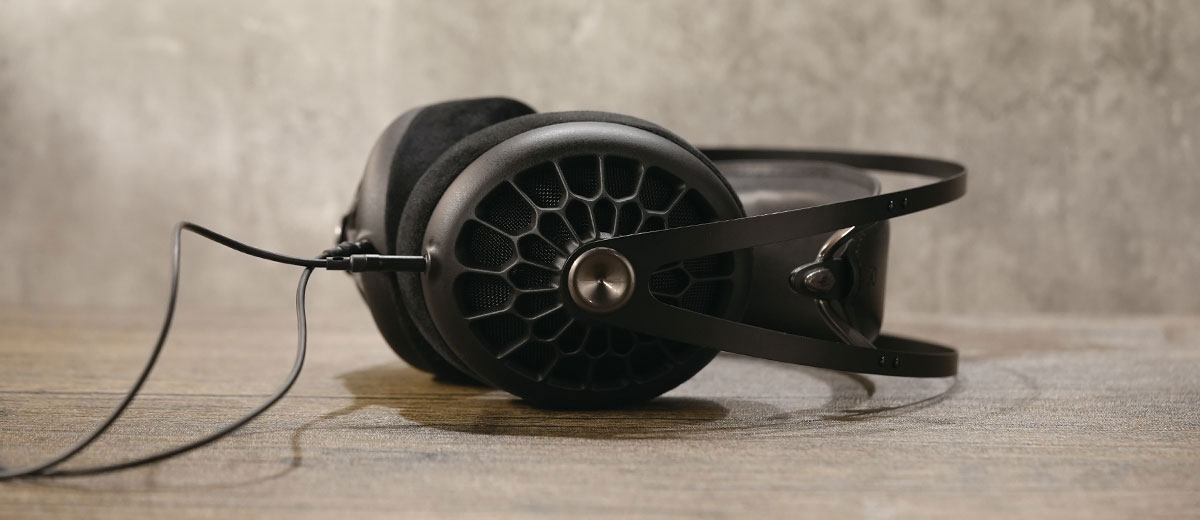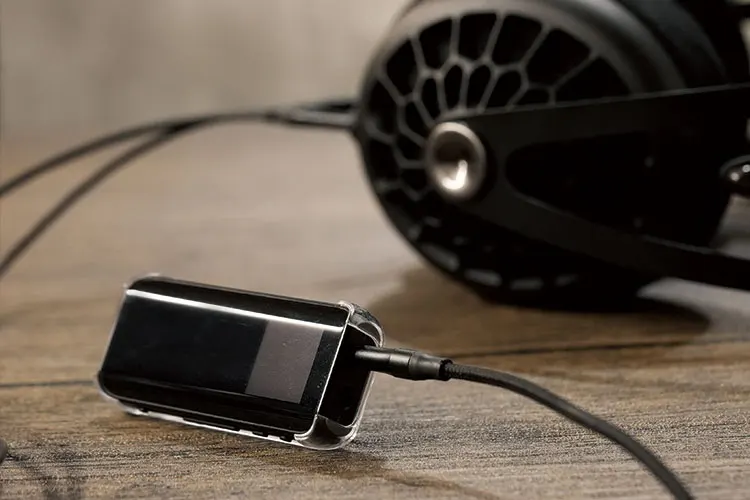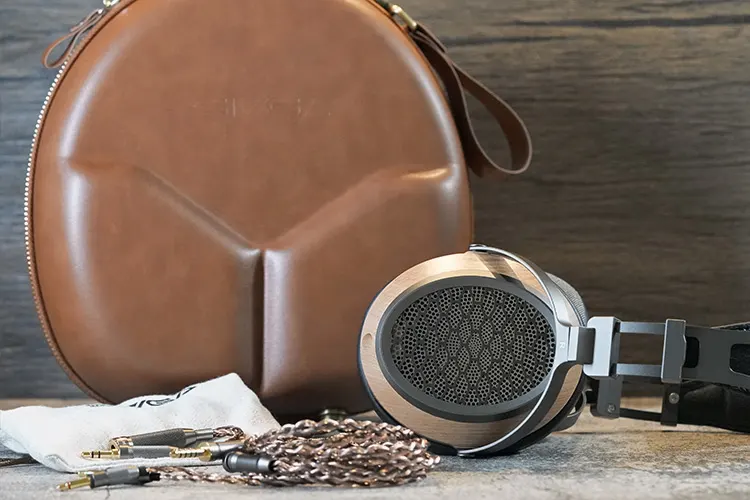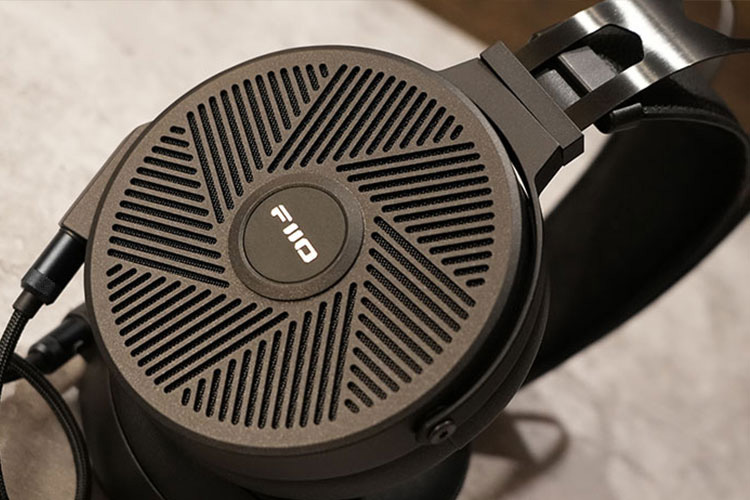Synergy
After testing the 105 AER with various devices, it becomes evident that it performs better with stronger decoding power along with a moderate level of amplification.
It pairs nicely with devices that exhibit a stronger coloring and texture in the midrange frequencies. The Shanling EC Mini, with its slightly warm sound profile, creates an enjoyable combination, offering relaxed bass and lush vocal performance
When paired with the more controlled and powerful ADI-2 Pro, the 105 AER demonstrates improved agility, delivering vocals with a more natural balance and enhancing the treble details.
Given the 105 AER’s neutral-warmish sound signature, this pairing further strengthens the texture in the lows while empowering the treble with better penetration power and definition, outlining the upper notes on the piano and upper strings of violins clearer and with better air.
In tests with dongles and Bluetooth receivers, such as the FiiO BTR15, the 105 AER delivers a cleaner and firmer output, slightly more potent compared to the output from the MacBook Air M2.
It would be ideal if Meze included a 4.4mm cable to leverage higher output power on 4.4mm outputs, which are often optimized and offer greater swings.
With the FiiO K19 on high gain, there is a sense of excess power, resulting in vocals sounding too forward and shouty. I prefer to lower the gain to a low or medium setting to create a better overall balance.
Select Comparisons
SIVGA P2 PRO
Technical
The SIVGA P2 Pro was released earlier this year and is a relatively portable set of semi-open designed planar magnetic driver headphones.
It is rated at 32Ω for impedance with an SPL of 98 dB/mW ±3 dB, which is relatively less easy to drive though not quite as sensitive as the dynamic driver-based Meze 105 AER.
The P2 PRO combines metal and wood materials and has a solid metallic framework with very smooth hinges.
Compared to the 105 AER the choice of material is more premium on the P2 Pro, with the 105 AER offering a more distinctive style and polished design.
However, the P2 Pro does come with balanced cables, which I hope Meze will consider adding.
Performance
Given that the 105 AER terminates with a 3.5mm connector, I put on a converter on the P2 Pro to compare their performance on single-ended outputs.
The staging width appears somewhat more constrained on the P2 Pro when connected via SE, which can be explained by its higher power demands.
The P2 Pro benefits from greater amplification power and higher gain for a more dynamic sound; otherwise, the mids may sound recessed and the bass bloated. The more sensitive 105 AER retains a dynamic and rich tone in the mids even with smaller DAPs and laptops.
When tested with the FiiO K19, the P2 Pro displays stronger perceived extension, enhanced resolution, and improved transient performance in the treble. Conversely, the 105 AER offers a more natural presentation with superior vocal authority and power, as well as roundness in the upper register.
The biggest difference is in the bass. The P2 Pro demonstrates greater agility and a firmer attack, characteristic of planar headphones. The 105 AER provides an airier, more soothing, and fuller bass response, adding extra presence to the low end while maintaining ample definitive power.
Another notable distinction lies in positioning. The 105 AER delivers a more precise and intimate vocal image, whereas the P2 Pro positions vocals slightly further back which helps expand the perceived stage depth and width.
It is worth noting that the P2 Pro shows more scalability potential, although it may struggle on less powerful sources which present no such issues for the 105 AER with my MacBook Air and dongles.
FiiO FT5
Technical
The FiiO FT5 features a large 90mm diameter driver with a dual N52 Neodymium magnet array, providing up to 1.5T flux. It utilizes a thin diaphragm measuring just 6μm.
The impedance is rated at 36Ω, with sensitivity ratings of 110 dB/Vrms (@1kHz) or 96dB/mW (@1kHz).
These specifications are considered relatively efficient and reasonably sensitive for a planar headphone, although it is less sensitive than the dynamic driver inside the 105 AER.
Design
The FiiO FT5 is constructed with lightweight magnesium alloy with a design language that echoes FiiO’s M-series DAPs. The build is solid and the detachable cable features a friction lock mechanism, which makes it feel very durable.
The headband on the FT5 is self-adjusting just like the 105 AER, and both headphones are equally comfortable. However, the FT5 feels heavier on the head due to its 456g weight compared to the Meze 105 AER at just 336g.
Performance
With a SE termination on the RME ADI-2 Pro, the FT5 showcases superior detail retrieval and bass agility.
However, the 105 AER presents vocals in a more natural tone with smooth roll-offs. The FT5 aims for enhanced detail extraction with a more pronounced 10kHz range in its frequency response.
The FT5 benefits from more power, creating a larger soundstage and firmer bass, albeit with vocal imaging that may feel more diffused and less centered than the more precise presentation of the 105 AER.
Balanced amplifiers can be utilized for the FT5, whereas the 105 AER is more easily driven and sounds delightful on dongles like the FiiO BTR15.
The FT5 does not exhibit the same level of separation and dynamism on such setups, particularly in the bass, which may come across as less impactful and defined when underpowered.
When tested with the FiiO R9, the 105 AER delivers punchy bass and weighty vocals, while the FT5 offers a slightly more balanced output and extended treble, with higher perceived definition and speed.
I would regard the FT5 as more suitable for critical listening e.g., video mixing and monitoring tasks, or Classical music which requires the stronger definitive power and extension. The 105 AER is more enjoyable for casual listening and works nicer with streaming.
My Verdict
As you might expect from Meze Audio, the 105 AER is another beautifully designed set of headphones. However, importantly, it achieves a good balance in its sound signature, setting itself apart from many of its competitors by prioritizing versatility and compatibility with lower-powered devices.
While the perceived resolution and transient performance may not reach the levels of similarly priced planar headphones, the 105 AER excels in ease of use, organic coloration, lightweight construction, and distinctive design.
These qualities make it a recommended choice for individuals looking for a straightforward plug-and-play solution to pair with 3.5mm sources like dongles and MacBooks.
Meze Audio 105 AER Technical Specifications
- Driver: 50 mm Dynamic
- Impedance: 42 Ohm
- Frequency Response: 5 Hz – 30 kHz
- Sensitivity: 112 dB SPL at 1KHz/ 1 mW
- Weight: 336g





